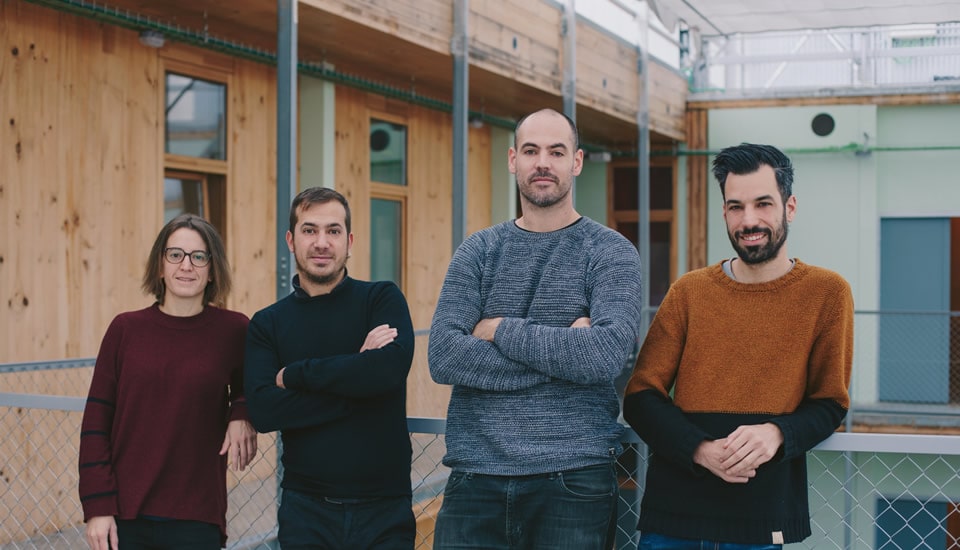You are a group of architects specialising in cooperative housing projects. How did you come together in Lacol? Did you meet each other by way of profession or by way of cooperative approaches?
We met at the ETSAB, studying architecture, and started working together during the final years of the course. We came around to a co-operative approach from the relationships we established in the Sants neighbourhood more than ten years ago.
You understand architecture as a tool that allows you to intervene in the closest environment, working for its social transformation.
Where do you aim to go with your work? Do you have a model to emulate in other countries?
Towards a work of proximity, that allows us to develop experiences of the Social Economy and collective projects, promoting a new access to housing model.
In our own country, in the 70s and 80s, many professionals were committed to the needs of their environment, something that years later became an exception. As for other countries, we are inspired by figures such as the Technical Assistance Institutes of Uruguay, which accompany housing cooperatives with a cross-disciplinary approach.
What kind of social and environmental transformation have you been able to experience in the reality of the projects you have carried out so far?
In our projects, we try to ensure that future users finish the process with greater knowledge and control over their environment. In some cases, such as in Can Batlló or La Lleialtat Santsenca, we have been able to collaborate in preserving the heritage of the place and in making the project fit better with the needs and aspirations of the surrounding environment.
How have urban planning and real estate law regulations evolved in recent years, with respect to co-housing?
They have not evolved much yet; at the moment we only have the modification of parking space reserves that we got in the city of Barcelona with the La Borda project. It is worth mentioning that the co-housing concept only determines the idea of community spaces, so we prefer to talk about cooperative housing, where ownership is collective and users have a much more active and central role in the whole process.
We need to introduce changes that allow us to understand that there are other ways of living, and that reward those who do not want to profit from housing.
Energy saving, the circular economy, the sustainability of construction elements are fundamentals in your projects. Is technology in this sense an ally or does it make projects more expensive? Is it well received in a participatory process? Do all users understand it?
Technology always has to be an ally for the project, knowing which system is the best and appropriate in each case is key. In some cases they can mean a cost increase but in the medium term they can mean cost savings in terms of comfort.
Most often in cooperative housing projects, members have a great awareness in terms of sustainability, which facilitates the starting point to look for solutions with the least environmental impact.
Some of you live in La Borda, thus closing the circle, albeit not always perfect, between professional and private life. What is it like to live in the very building that one designed?
It is very good, it allows you to experience the building first-hand, many of the intentions of the project are put to the test and errors are perceived more clearly. It is a good school of learning, we suppose that it’s similar to when architects build their own home, but in this case collectively.
How do you imagine the future of cooperative housing? Is it a way for everyone to live? Will it be the housing model of the future?
We start from a reality and a very dualistic mentality, where private property is the predominant paradigm. Cooperative housing will not be the predominant model for now, but we are working to make it at least a viable option for those who decide to opt for this model.


